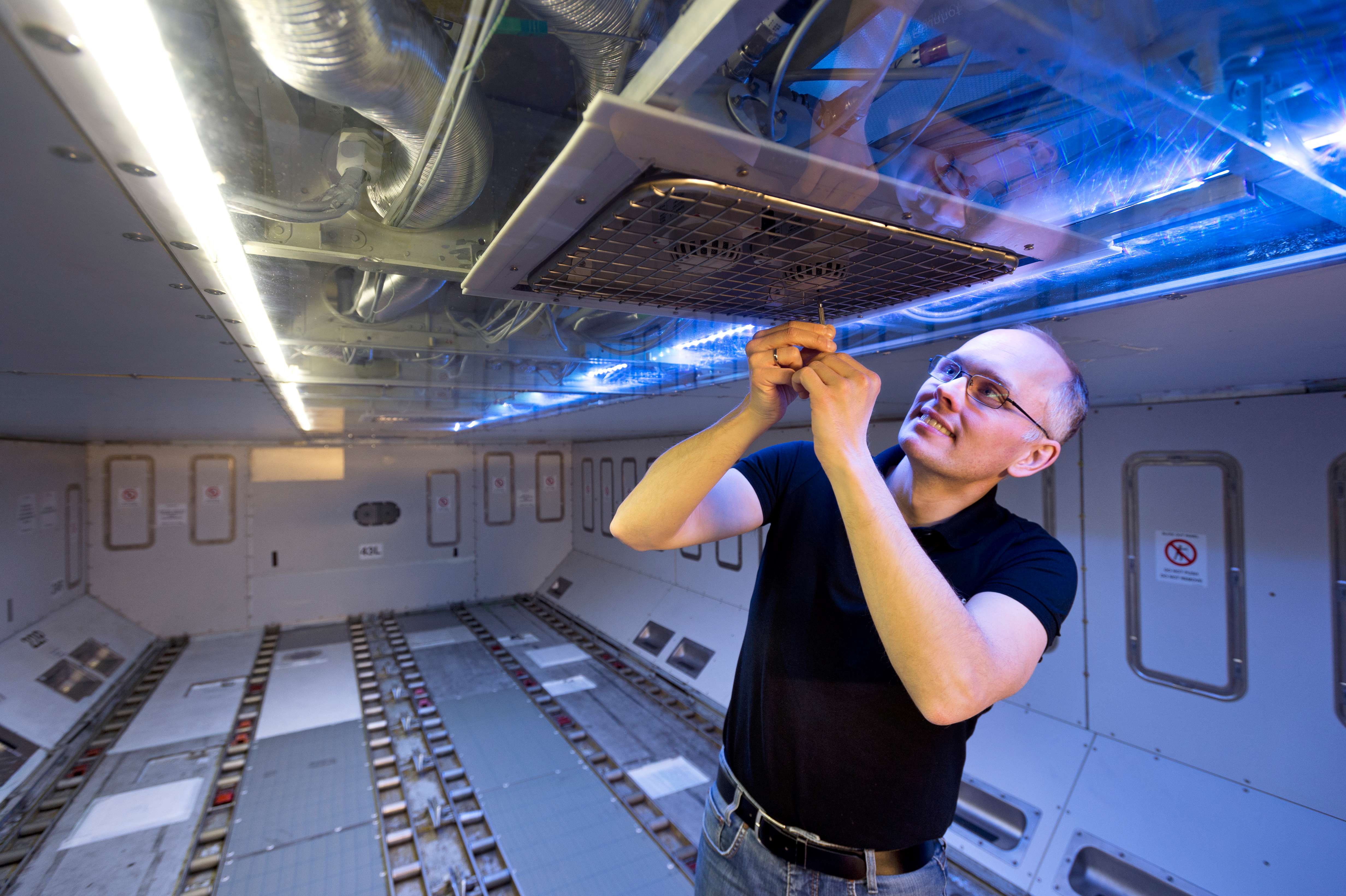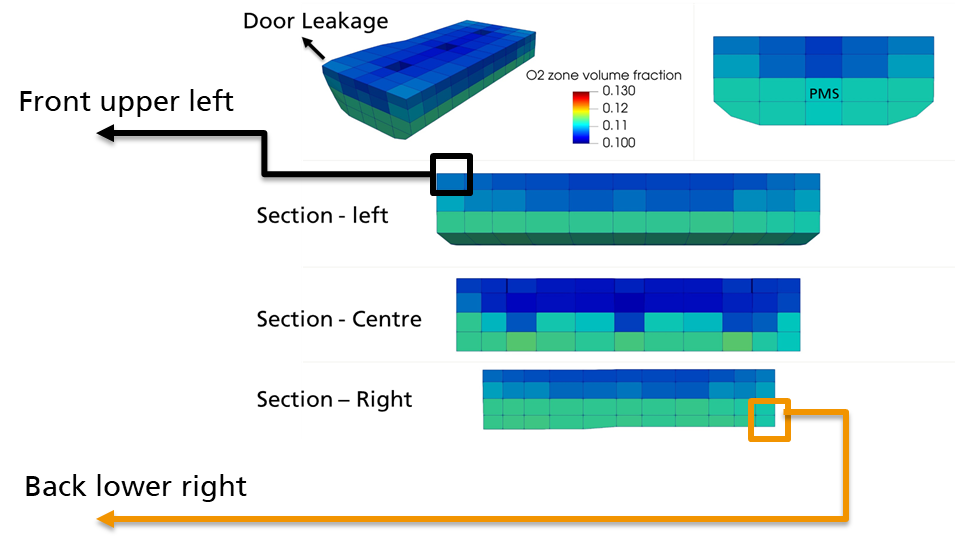

Extinguishing fires with a view to the environment
Making flying more climate friendly by developing an environmentally-friendly fire protection system - that is the aim of our scientists in the Flight and Vehicle Climate Control working group. In the “Environmentally Friendly Fire Protection” project, the distribution of new, environmentally-friendly fire extinguishing agents for the cargo sector is being tested by way of experiments under various climatic boundary conditions. The scientists want to demonstrate that the desired concentration is reliably maintained throughout the cargo area during the entire flight until landing. To this end, the temperature of the cargo area and extinguishing agent, the way the cargo is loaded, and the extinguishing agent are varied.